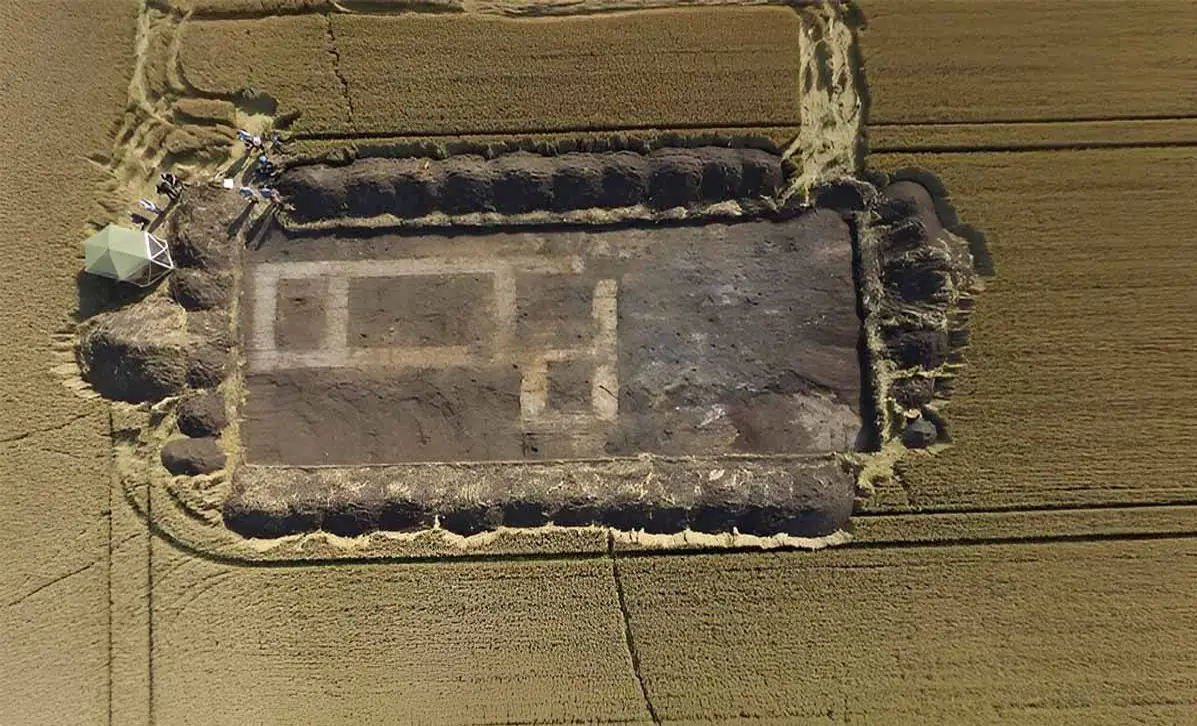A team of archaeologists from Newcastle University have uncovered a prehistoric henge during a search for Saint Guthlac’s hermitage.
Saint Guthlac was a Christian hermit and saint, who in AD 699-701, established a hermitage on what was a deserted island in the Fenlands at Crowland, England.
The biographer, a monk known as Felix, provides an account of Guthlac’s isolation in the Vita Sancti Guthlaci (Life of Saint Guthlac), and said that Guthlac built his hermitage into a robbed out prehistoric barrow mound.
According to tradition, Guthlac led a holy ascetic life and gave sanctuary to Æthelbald, future king of Mercia, who was fleeing from his cousin Ceolred.
After Guthlac’s death in 714, his uncorrupted body was discovered 12 months later that inspired a small monastic community and cult. This led to the establishment of Crowland Abbey in the 10th century to honour the saint, which survived until the Dissolution in the 1530s.
Archaeologists have previously tried to find the hermitage and barrow from Felix’s accounts, which have long been thought to be in Anchor Church Field to the north-east of Crowland.
Recent excavations at Anchor Church Field by archaeologists from Newcastle University and the University of Sheffield have uncovered a previously unknown Late Neolithic or early Bronze Age henge, a type of circular earthwork and one of the largest ever discovered in eastern England.
It is likely that during Guthlac’s time, the henge would have been a prominent feature above the marshes of the Fenlands, and would be seen by hermits as a unique landscape with a long and sacred past.
Archaeological evidence indicates that the henge was reoccupied during around Guthlac’s lifetime, indicated by large quantities of ceramics, bone combs, and fragments of high-status drinking vessels from the Anglo Saxon period.
Unfortunately, any traces of structures from this period have been destroyed through later activity.
“We know that many prehistoric monuments were reused by the Anglo-Saxons, but to find a henge—especially one that was previously unknown—occupied in this way is really quite rare,” said Dr Duncan Wright, Lecturer in Medieval Archaeology at Newcastle University.
“Although the Anglo-Saxon objects we found cannot be linked with Guthlac with any certainty, the use of the site around this time and later in the medieval period adds weight to the idea that Crowland was a sacred space at different times over millennia,” added Dr Wright.
Excavations also uncovered the remains of a 12th century hall and chapel, built by the Abbots of Crowland probably to venerate St Pega, Guthlac’s sister, who was herself an important hermit in the region. The hall would have been used for elite accommodation, perhaps for high-status pilgrims who were visiting Crowland.
Header Image Credit: The Anchor Church Field Project
Sources : Newcastle University | Sacred Landscapes and Deep Time: Mobility, Memory, and Monasticism on Crowland’ by Duncan W. Wright and Hugh Willmott. Journal of Field Archaeology DOI: 10.1080/00934690.2024.2332853





